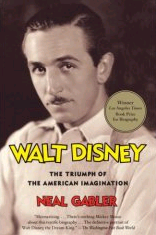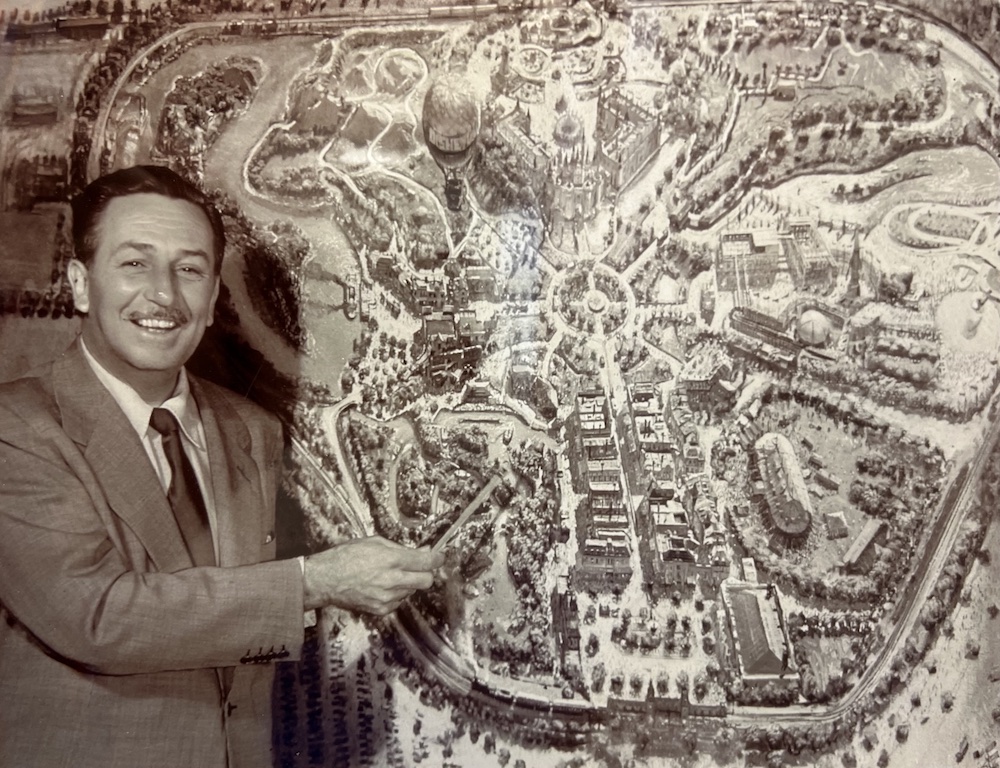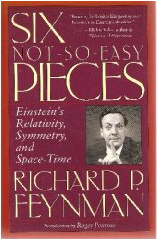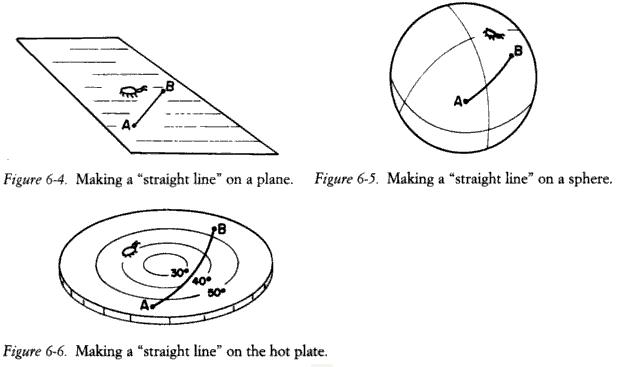
Walt Disney: The Triumph of the American Imagination by Neal Gabler (2006).
While I haven’t read every biography of this famous visionary, this book about Walt Disney has to be one of the most comprehensive studies of his life. The attention to detail and depth of research and investigation are exceptional. The references, notes and bibliography comprise around 100 pages of the 880 page, 2.8 pound volume.
Animation is creating the illusion or alternate reality of life (see the Wikipedia article Disney Animation: The Illusion of Life). Gabler describes how Walt had an insatiable desire to bring a perfect alternate reality to life. This steered his passions and energy throughout his life. Through animation, Walt could project joy, hope, struggles, persistence and emotion onto the two dimensional world of the silver screen. His desire for perfection demanded quality and innovation. From the early shorts where he pioneered new levels of animation and synchronized sound (Steamboat Willie) to the realism of Snow White and the Seven Dwarfs, the first American animated feature film in movie history, Walt wanted to bring a new level of entertainment to the masses. He was shaping a reality that would stir people, cause them to laugh and to cry, to enjoy and to aspire.
Walt was never happy with status-quo. With the success of Snow White fueling his dreams, he built the Burbank studio to bring to life something even greater. With Walt pushing for greater realism in animation, Pinnochio and Bambi were trying to exceed Snow White. But his heart was always leaning toward something grander. Consistently Walt would become bored with what he had mastered and would need to push through some new wall. After Snow White, that would be Fantasia. He wanted to bring music to life on the animated screen. This new feature would pioneer an early stereophonic technology called Fantasound, making Fantasia the first commercial film with multichannel sound. The film opened to mixed critical reaction and failed to generate a large commercial audience, which left Walt in financial straits, something that characterized most of his life, at least until Disneyland. Author, Neal Gabler comments about this in a Q&A session on Amazon.com:
It is astonishing that Walt Disney was always–and I do mean always–in dire financial straits until the opening of Disneyland. The primary reason wasn’t that his cartoons weren’t making money, because they were–at least until the war in Europe when the loss of that market meant disaster for the features. But even as they were making money, the studio was losing money because Walt was constitutionally incapable of cutting corners, enforcing economies, laying off staff. The only thing about which Walt Disney cared was quality. He thought that quality was the way to maintain his preeminence, though quality also had the psychological advantage of letting him perfect his world. The problem was that quality was expensive. To cite just one example, Walt spent more than a hundred thousand dollars setting up a training program for would-be animators, though even then the return was small because Walt was so picky that very few of the candidates actually qualified to work at the studio. Money meant very little to Walt Disney. It was only a means to an end, never an end in itself.
After Fantasia, Walt needed something new but instead found himself trying to manage and sustain his studio. The creative “family” he had created over the years turned on him with a strike and the unrelenting creditors demands soon steered him toward survival mode. Walt and his brother Roy managed to keep the studio together, but at a cost of quality. Economically produced features like Dumbo and a long string of government sponsored shorts and educational films helped float the studio through hard financial times. Walt was unhappy in his new role. Instead of inventing something new, Walt invested in new hobbies, backyard railroad and minatures (from Wikipedia):
During 1949, Disney and his family moved to a new home on a large piece of property in the Holmby Hills district of Los Angeles, California. With the help of his friends Ward and Betty Kimball, owners of their own backyard railroad, Disney developed blueprints and immediately set to work on creating a miniature live steam railroad for his backyard. The name of the railroad, Carolwood Pacific Railroad, originated from the address of his home that was located on Carolwood Drive.
Walt’s passion for the railroad and building miniatures was intertwined with his next great adventure in creating a new reality: Disneyland. To dislocate from the now mundane pressures at the Studio, Walt poured renewed energy into his newly formed WED Enterprises to dream and create Disneyland. This would occupy his focused interest for several years of planning, financing, constructing and operating (with Walt taking personal attention to details and continually “plussing” the park). Walt loved to meet a challenge and financing Disneyland was definitely a challenge. However, he had a solution: Television. Walt led the charge to bridge the gap between film studios and television. He has been fascinated with the new medium and his Disneyland idea propelled his desire to enter this new world. Using a series called Disneyland and later after the opening of the park, Walt Disney Presents that aired on ABC, Walt would personally host the show that consisted of cartoons, live-action features, and documentaries. Much of the material was designed to create awareness for Disneyland but was also used to promote upcoming studio feature films. The show later moved to NBC and taking advantage of the new color television changed its name to Walt Disney’s Wonderful World of Color.
When he did finally pull away from the operations of the park, it was only to focus his attention on a new form of animation, this time in three-plus dimensions: audio animatronics. Among other things, Walt was focused on creating a believable moving human model in the “Great Moments with Mr. Lincoln” exhibit for the 1964-1965 New York World’s Fair. After the success of the Mr. Lincoln exhibit, this and other attractions created for the fair (“It’s a Small World” and “Progressland”) were relocated to Disneyland.

Community planning became the next focus on Walt’s life. He wanted to take the clean and controlled environment that he had been able to create at Disneyland and expand that to a scale of a city. He invested time and energy researching city planning. He wanted to bring an idealized community to life through his Experimental Prototype Community of Tomorrow (EPCOT). This began his search for land that eventually ended up in Florida and became the plans for Disneyworld, now the largest and most visited theme park in the world. Sadly, he would die on December 15, 1966, prior to realizing the next step in his dream. The night before Walt died, Roy had visited the hospital room and said that he was staring at the ceiling and pointing to where everything was going to be located at EPCOT, including the entrance and exit roads. With Roy’s leadership of the company, Disneyworld did open but Walt’s community of tomorrow would not be realized. Instead, a world’s fair, theme park version of his ideas would open in 1982 and be named EPCOT.




